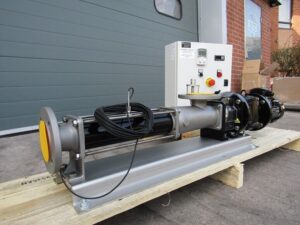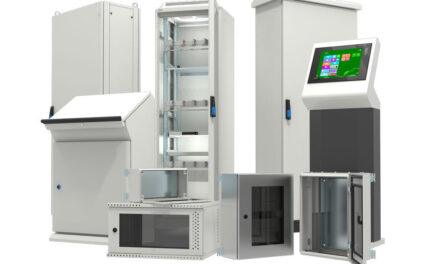 We are entering an era of increased electrification, driven partly by the ban on Diesel and Petrol Vehicles expected in 2030, but also an ever-increasing swell in pricing at the fuel court.
We are entering an era of increased electrification, driven partly by the ban on Diesel and Petrol Vehicles expected in 2030, but also an ever-increasing swell in pricing at the fuel court.
With pricing reaching the highest levels on record, electrification of fleets and plant equipment is becoming increasingly attractive.
Although a 100% electrification of Petrol and Diesel cars is planned, you cannot ignore recent public cautionary advice regarding battery shortages looming from 2024 onwards. It would be prudent to expect that a future fuel strategy is more likely to be of a hybrid scenario combining electrification with E Fuels.
EFuels or Electricity Generated Fuels are synthetically created fuels, manufactured utilising renewable energy and synthetic hydrocarbon gasses such as CO² mixed with biofuel to create fuels with a Net Zero Carbon Footprint.
Efuels such as Ammonia, Butane, DME, Ethanol, Gasoline, Methane, and Methanol can be created in a synthesis reactor enabling use in both historical combustion engines, and potentially future engine design.
Although lithium powered vehicles are more efficient, there continues to be many advantages to using efuels as a method for refueling, which can not yet be replicated by electrification. These include an existing refueling infrastructure in place which with slight modification to handle new forms of liquid fuel, users can continue to use a proven method for a short refueling process with rapid deployment.
 Another major benefit of future fuels is its production, development and supply is such that it can be reshored within the UK reducing the potential impact of supply chain shocks recently witnessed with increased control over production and supply.
Another major benefit of future fuels is its production, development and supply is such that it can be reshored within the UK reducing the potential impact of supply chain shocks recently witnessed with increased control over production and supply.
But how should such fuels be handled in pumps and what are the considerations which should be given when dealing with such liquids to avoid difficulties or issues during transfer?
5 Considerations for Handling Future Fuels
Some future fuels which are Ethanol or Methanol based have a low flash point which is the temperature at which a substance begins to evaporate forming a vapour which is easily ignitable.
As we have recently seen with DESEAR and its re-classification of Diesel as a flammable liquid despite having a flash point of 55°C it may be prudent to specify ATEX equipment on blends of fuels with flashpoints not too dissimilar to that of Diesel to prevent changes to plant being required due to changes in legislation.
Another worthwhile consideration is the utilisation of Magnetically Driven pumps which are a design of pump where the pump head is seal less to prevent any chance of leakage from the pump head. In particular when handling liquids which are hazardous or which can gasify when exposed to atmospheric pressure.
Typically pump heads contain a mechanical seal where the pump shaft passes through the pump head, with the seal preventing leakage from the pump head, however over time this component is subject to wear and tear. In magnetically driven pumps the pump head is driven by magnets either side of the pump casing eliminating the need for a seal meaning there is zero chance of leakage with full containment of any fluids as the main point of failure has been removed.
 A fluids Viscosity in some pump types can drastically affect the flow and pressure capabilities of the unit. If the fluid viscosity is higher than expected, then it is possible for the pump to struggle to meet the required flow and pressure, and if too thin, slip can occur where the fluid recirculates within the pump head which then begins to heat within the casing. Ensuring the right technology is used can mean the pump chosen is relatively unaffected by changes in viscosity, meaning if blends change during trials or fluctuations occur with temperature, the volumes transferred will remain consistent.
A fluids Viscosity in some pump types can drastically affect the flow and pressure capabilities of the unit. If the fluid viscosity is higher than expected, then it is possible for the pump to struggle to meet the required flow and pressure, and if too thin, slip can occur where the fluid recirculates within the pump head which then begins to heat within the casing. Ensuring the right technology is used can mean the pump chosen is relatively unaffected by changes in viscosity, meaning if blends change during trials or fluctuations occur with temperature, the volumes transferred will remain consistent.
Should certain liquid blends contain very small solid particles, these can create an abrasive effect within certain pump designs leading to rapid component wear such as screws being worn, or gear teeth wearing leading to a rapid loss in pressure generation capabilities and increased maintenance – all which can be avoided if specified at the outset.
One critical point is the Net Positive Suction Head Required (NPSHR) by the pump and how with some fluids such as Ammonia or Butane which when exposed to atmosphere are a gas require pumping at low temperatures and high pressures to ensure they remain in liquid form. Having pumps which have a low NPSH Requirement can ensure your process does not encounter issues such as cavitation or reduced flow and pressure within your process.
If you are looking to develop a process for a future fuel, and are unsure what pump type may be best visit www.northridgepumps.com or contact us on 01773 302 660 to see how we can help.

